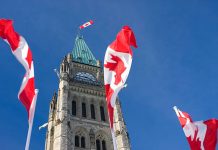Key insights from the week that was.
Australian Q1 GDP printed broadly as expected, rising 0.1% (1.1%yr). There were some surprises for consumption however, a firmer-than-anticipated gain of 0.4% in Q1 – thanks in part to major events like Taylor Swift Era’s Tour and the Formula 1 – and an upward revision to tourism-related spending by Australians abroad, adding $22bn to nominal spending over the past five quarters and 1.0ppt to annual consumption growth. These revisions also appeared as a lift in services imports, and consequently had zero net impact on GDP. In this week’s essay, Chief Economist Luci Ellis explains why these revisions are not a concern for future inflation.
Even with these revisions, Australian per capita consumption is still down 1.1% over the year to March 2024, broadly in line with the experiences of peer economies, excluding the US. Additionally, inflation’s impact on household earnings was material, enough to leave real disposable income flat over Q1 and up just 0.4% versus March 2023. The financial health of Australian consumers is set to remain fragile. The Stage 3 tax cuts and the recently announced 3.75% increase in the minimum wage and awards will provide some relief, but the cumulative impact of elevated inflation will linger.
Other parts of the domestic economy were soft too. The main detractor from domestic demand was new business investment, –0.7% in Q1 as weakness in non-dwelling construction (–4.3%) and infrastructure (–4.8%) outweighed the lift in equipment spending (+2.0%). Housing investment also remains in a downtrend (–3.4%yr). That private demand was near-flat in the quarter (+0.1%) highlights the breadth of current economic weakness, with only the public sector in robust health, up 0.6% and 4.5%yr.
On trade, Australia’s current account balance slid from a surplus of $2.7bn in Q4 to a deficit of –$4.9bn in Q1. As noted earlier, significant revisions to tourism-related services imports were the chief culprit. Accounting for that, the scale of the reduction in the balance between Q4 and Q1 (–$7.6bn) was in line with expectations. Strength in import volumes (+5.1%) was met with only a modest increase in exports (+0.7%), leading net exports to detract a material 0.9ppts from GDP in Q1. The latest data on monthly goods trade suggests a partial unwind of recent import strength is underway in Q2, at least for goods.
Before moving offshore, a final note on housing. The latest data from CoreLogic highlighted a growing divergence by capital city. On a three-month annualised basis, house price growth ranged from –0.9% in Melbourne to 5.0% in Sydney and 17%, 18% and 27% respectively in Brisbane, Adelaide and Perth. It was therefore unsurprising to see housing finance approvals continue to surge in April, up 4.8% (25%yr), as investor activity soared to new heights across the aforementioned smaller capitals. The diversity of conditions across the states will continue to have a significant bearing on nation-wide outcomes. For more housing insights, see our latest Housing Pulse published earlier this week on Westpac IQ.
Offshore, the Bank of Canada cut its policy rate by 25bps to 4.75% at their June meeting. The decision came as the Bank became more confident that inflation will sustainably return to 2%, with inflation’s breadth narrowing to near its “historical average” and wage pressures easing. Wages and housing inflation will remain key determinants of CPI inflation hence. Canada’s labour market is slowing, and supply is sufficient for new demand, allowing wage and services inflation to cool. When questioned about policy divergence with the US, both the Governor and Senior Deputy Governor held that their decisions are based on domestic factors and that, while there are limits to how much Canada can deviate from the US without material implications for the currency, those limits are some way off. Still, the Governing Council remain mindful of residual inflation risks, and so policy is not on a pre-set course. If the economy evolves as expected, further rate cuts will come in time. Updates for GDP and the labour market will be released prior to the Council’s July meeting.
The ECB subsequently cut their policy rates by 25bps at the June meeting, as expected, having kept rates at peak levels for nine months. Over that period, inflation has decelerated 2.5ppts, and President Lagarde made clear that the Council have also become more confident in returning inflation to target in the medium term with inflation expectations having declined “at all horizons”. Interestingly, this decision was made and guidance given despite an upward revision to the inflation outlook, headline inflation now seen averaging 2.5% in 2024, 2.2% in 2025 and 1.9% in 2026. The persistence of above-target inflation is a result of domestic inflation, supported by elevated wage growth. The ECB see this wage growth as “making up for the past inflation surge” and believe that wage momentum and services inflation will take time to moderate. However, forward looking wage indicators and profits absorbing some of the “pronounced rise in unit labour costs” give the Council confidence that the deceleration is ongoing and catch-up wage growth will have a limited impact on consumer inflation hence.
The ECB’s GDP forecasts point to similar confidence in a return to potential growth, GDP growth to accelerate from 0.9% in 2024, to 1.4% in 2025 and 1.6% in 2026. President Lagarde made clear however that there is an array of risks facing the economy which will need to be assessed carefully. Although GDP growth was robust in Q1 at 0.3% and the unemployment rate is historically low, the downside surprise in April retail sales (-0.5%, 0.0%yr) provides evidence of consumer uncertainty. The restrictive nature of credit conditions also need to be monitored closely. The ECB will maintain a ‘data dependent’ approach to setting policy, taking their time with further easing. But, being a long way from neutral, having had success with inflation and given the immediate uncertainty surrounding economic growth, a series of rate cuts should be expected through 2024 and 2025 – Westpac forecasts a cumulative 150bps (including today’s decision) to end 2025.
Over in the US, the ISM manufacturing PMI surprised to the downside, falling from 49.2 to 48.7 points. New orders jolted lower despite a gain for export orders, pointing to weak domestic demand. Employment gained in the month but is currently only around average levels, while price pressures were reported as benign. The non-manufacturing PMI meanwhile rose 4.4 points to 53.8, supported by a rebound in business activity and new export orders. Price pressures for services were also assessed as benign. Of concern for activity however, the services employment index remained materially below its historic average, pointing to outright job losses. In contrast, the JOLTS survey provided a benign signal for the employment outlook, with job ads slowly converging to their pre-pandemic level, the job opening rate now 4.8% versus 4.5% in 2018 and 2019, and the hiring and separation rates consistent with moderate gains for employment and limited churn. Overall, these data points signal the FOMC have time on their side when assessing policy, but also that downside risks to activity are building. A measured pace of rate cuts from September through 2025 to 3.375% at mid-2026 should manage these concerns and achieve inflation near target over the period. The FOMC’s own view on the outlook will be made clear through next week’s June update to Committee forecasts and Chair Powell’s post-meeting press conference.











